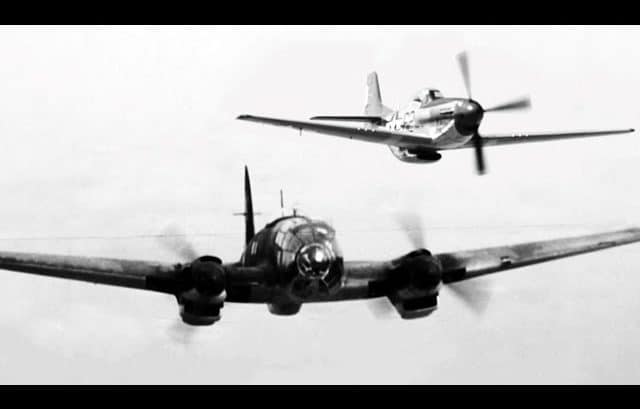On August 24, 1944, 1st Lt. William R. Preddy of the 503rd Fighter Squadron was on his P-51 Mustang nicknamed “Rusty.”
“Rusty”
Lt. William’s Mustang was nicknamed Rusty for a particular reason- it’s made of multiple scrapped Mustangs, and his old engine always had problems.
On that day, he received a new engine, a new 1615, and wanted to test its reliability and performance prior to his schedule in the afternoon. He takes off and begins to steep climb at high throttle to break in the engine. But suddenly he was informed over the radio that the base had picked up incoming aircraft.
Unusual Occurrence
The time was only 11 in the morning, and quite unusual for a German plane to be attacking at this time. When Lt. William went out to investigate, he saw an incoming plane with a very thick smoke trail and repeating a very wide circle pattern.
As he neared the aircraft, it was very clear that this was the Heinkel He 111 bomber, considered the Luftwaffe’s best in World War II. Due to its limited defensive capabilities, never designed to fly alone. To spot a lone Heinkel in the morning, especially one on fire, was quite odd.
A Difficult Decision
He then approaches the plane from above, noticing the whole tail section was on fire. He informs the ground that it was just a lone Heinkel 111, and was ordered to immediately shoot it.
He knew that one short burst to that tail would already bring down the already weakened plane. After a few tense moments, Lt. William lets go of the trigger. He was unable to bring himself to open fire on a defenseless crew. He knew that disobeying direct orders and refusing to shoot down the enemy would lead to a court martial.
Unexpected Turnout of Events
Lt. William approached the cockpit of the pilot, signaling to the pilot to turn away from England. He then sees a young pilot fighting with the controls in sheer panic as the fire spread. With difficulty, the pilot gets the bomber partially turned around towards France.
Both pilots exchanged a salute of respect and William brings his Mustang in front giving them a slipstream of air, helping them in getting as far away as they could from the coast of England.
However, the fire-ridden plane eventually gave in and crashes into the North Sea. William, flies to the crash site, and not knowing if there are any survivors, throws his lifejacket overboard and over the radio, informs control that he had successfully shot the bomber over the North Sea, and returns back to base. His story would only be discovered a year later in his tragic death.
Last Mission
On April 17, 1945, 1st Lt. William would go on in his last mission, after chasing two German me 262 jet fighters. Although he manage to crash land, a shrapnel hit him and was critically wounded. He was taken by a Czech woman who took him 5 km on a horse-drawn cart to a German emergency treatment center. Being an American airman, German doctors refused to take him in.
The woman then took him another 10 kilometers to a nearby hospital where he would die. His personal diary was recovered, and he was buried at his crash site before he was moved to an American cemetery.
A marker in tribute to the fallen pilot, written in Czech, to remember his actions of gallantry and chivalry when he refused to shoot down a defenseless pilot. The marker exists to this day, and Lt. William would go on to receive numerous posthumous awards.


